News & Media
The Process of Creating Art
October 11, 2010
The Faculty Art Exhibition, a biannual show that features DePauw studio art faculty members, is open now through Oct. 15 at the Richard E. Peeler Art Center.
Lori A. Miles, associate professor of art, says, “The point of the show is for students to have the opportunity to see what our artistic research looks like right now. It’s unlike other shows where you have the work completed and chosen up to a year in advance. For this show, we choose our own, most recent work, often before it’s sent to national shows.”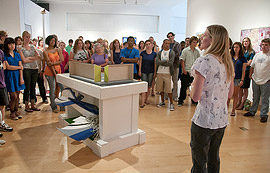 The exhibition opening was last month, and faculty members gave gallery talks describing their work. “We wanted students to have a sense of what it means to be practicing studio artists, and we shared with them how we work through ideas. It’s challenging to talk about work that is that new because it hasn’t been written about nor has it been processed fully by the artist. For most of us, the work in the show represents some stage along the path of a conceptual idea that we’re working with.
The exhibition opening was last month, and faculty members gave gallery talks describing their work. “We wanted students to have a sense of what it means to be practicing studio artists, and we shared with them how we work through ideas. It’s challenging to talk about work that is that new because it hasn’t been written about nor has it been processed fully by the artist. For most of us, the work in the show represents some stage along the path of a conceptual idea that we’re working with.
“It’s so exciting to see someone’s work right out of the studio. It’s so fresh and unencumbered. This show is a great place to test our ideas, receive feedback and allow our students to see an active process. Sometimes, parts of our work get removed and added – until it’s in its final stage. It’s important for students to see the struggles of all the stages.
“In regard to my work, I’ve been dealing primarily with issues of class and location,” Miles says. “I have a longstanding interest in home and how we identify ourselves according to a location – where we define our own home and what that means to have a home, or to be home. It comes from moving a lot when I was growing up. 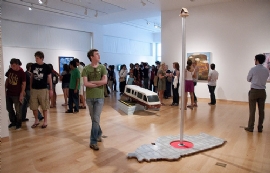 “I have a tenuous attachment to the idea of home, and I’m also interested in the spaces in between. What are those visual markers that indicate that you’re at a threshold moment or some space in between? So, as an artist, I started to think about what visual imagery might indicate that you’ve come to a crossroads. So, there are a lot of maps in my work – things that imply you’re in transit.
“I have a tenuous attachment to the idea of home, and I’m also interested in the spaces in between. What are those visual markers that indicate that you’re at a threshold moment or some space in between? So, as an artist, I started to think about what visual imagery might indicate that you’ve come to a crossroads. So, there are a lot of maps in my work – things that imply you’re in transit.
“I try to think about class and what that really means. The perception of poverty has associations with a moral or value system associated with being poor. Yet every person who is successful loves to tell stories about how poor they were growing up,” Miles says. “As you become successful, you attach that to yourself in some way as a marker of how far you’ve come – the hole you’ve crawled out of or the space you’ve risen above.
“Most of my pieces will have some kind of hole or crevice that is a metaphor for poverty. So, I’m interested in to what degree money does determine the value system or not.”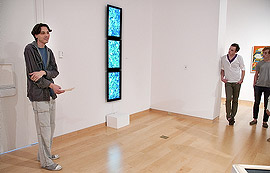 Peter J. Williams, part-time assistant professor of art, created work for the show titled “Extreme Greenies.” “It’s a work of generative software art that uses artificial life simulations to draw a series of corporate/brand logos onto an array of three vertically stacked LCD displays.
Peter J. Williams, part-time assistant professor of art, created work for the show titled “Extreme Greenies.” “It’s a work of generative software art that uses artificial life simulations to draw a series of corporate/brand logos onto an array of three vertically stacked LCD displays.
“The work is one of a recent series in which I am utilizing Internet memes as raw material to create art works from. In this case, the piece began from one of Sarah Palin's tweets, in which she coined the phrase "extreme greenies" to describe environmental activists,” Williams says.
“The term meme comes from contracting the words – gene and mime together to make meme. It’s a piece of culture – a song, a clip from a movie or a joke – that morphs – like a gene – by virtue of the way it is mimed or repeated, imitated or parodied by many, many people. Such phenomena tend to spread very quickly within a short period of time.
“In this piece, and all of the artwork in this series, I see the final product as being far removed from the original source material – tweet, YouTube clip, etc. This is why I consider the meme itself as raw material. The final piece is molded or sculpted from the meme, but does not in any way resemble it.
“My purpose in working this way is to try and recover or nurture something of aesthetic and cultural value from the phenomena of memes. I try to work only with the original source if possible – the cultural artifact as it existed before any splicing began. I choose my memes that, in my view, either had no redeeming qualities to begin with, or have had these qualities obliterated by the medium of Web 2.0/social networks,” Williams says.
The exhibition also includes “First Breath/Last Breath,” work by Cynthia O’Dell, associate professor of art.
“This project is a multi-channel photography and video installation. The work explores the death of my father and the birth of my daughter through two-dimensional photographs, a single channel large wall projection, which is an approximately three-minute video in an experimental documentary format,” O’Dell says.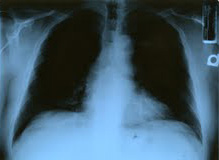 “This piece also includes two small LCD panels, which portray a video documentation of my father’s last haircut and my daughter’s first haircut at Max’s barbershop in Greencastle, Ind. The LCD panels are placed on a hospital bed and bassinet. Finally, both beds are in the middle of the darkly lit installation and illuminated from underneath. The bed is covered with sheets, my father’s X-rays and dirt. The bassinet contains a glass box filled with water and small sonogram images of my daughter.
“This piece also includes two small LCD panels, which portray a video documentation of my father’s last haircut and my daughter’s first haircut at Max’s barbershop in Greencastle, Ind. The LCD panels are placed on a hospital bed and bassinet. Finally, both beds are in the middle of the darkly lit installation and illuminated from underneath. The bed is covered with sheets, my father’s X-rays and dirt. The bassinet contains a glass box filled with water and small sonogram images of my daughter.
“With this work, I metaphorically illuminate the pain and beauty of both life and death, and the moments of transition from one to the other,” O’Dell says.
John G. Berry, part-time assistant professor of art, says of his paintings in the exhibition, “I'm inspired by the idea of layered worlds. This shows up in Dante's Inferno, the underground levels of Super Mario, the illusory world of The Matrix, Terry Gilliam's Time Bandits, and Native America creation stories – all sorts of things. I'm drawn to how these worlds contain both multiplicity and stability.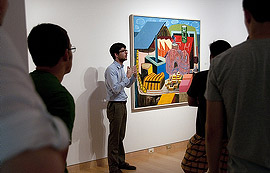 “I'm interested in how unpredictable painting is today. It’s a very adaptable medium. Additionally, people may claim that painting has lost its cultural relevance, but collectively we've never really moved away from looking through a two- dimensional surface. From photography to movies to computers to smart phones, we've simply skyrocketed the amount of information coming at us from a flat rectangle.
“I'm interested in how unpredictable painting is today. It’s a very adaptable medium. Additionally, people may claim that painting has lost its cultural relevance, but collectively we've never really moved away from looking through a two- dimensional surface. From photography to movies to computers to smart phones, we've simply skyrocketed the amount of information coming at us from a flat rectangle.
“In my work, I'm trying to make an outside space appear as a psychological inner space through using common cultural references of consumer and digital experience,” Berry says.
Visit the Richard E. Peeler Art Center website for more information about this show. For all arts information, visit the Arts@DePauw website.

Your DePauw is filled with amazing people and experiences. Share your stories with the world by sending an e-mail to YourDePauw@DePauw.edu.
Contact Us
Communications & Marketing
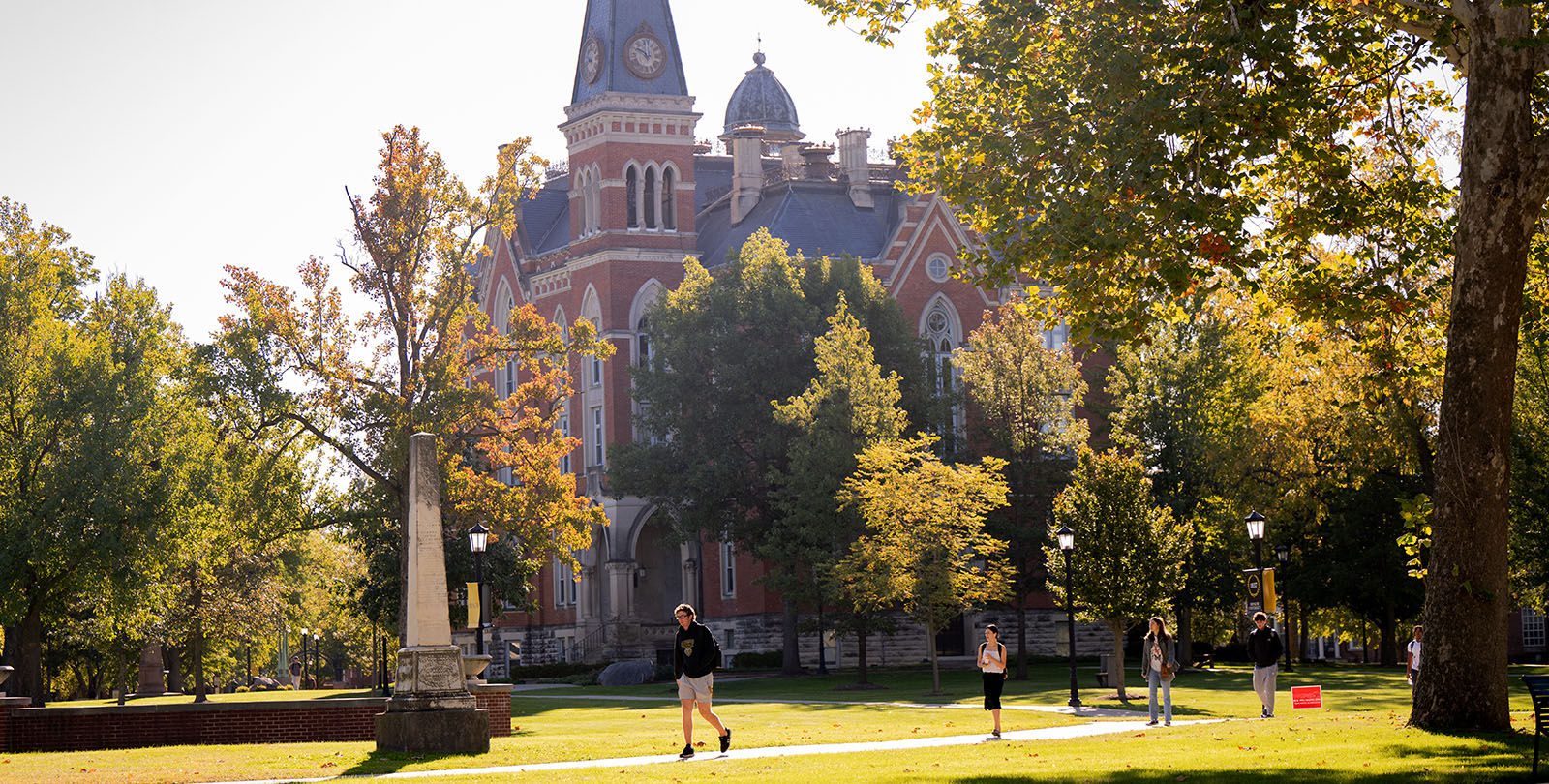
Bob Weaver
Senior Director of Communications
- bobweaver@depauw.edu
- (765) 658-4286
-
201 E. Seminary St.
Greencastle, IN 46135